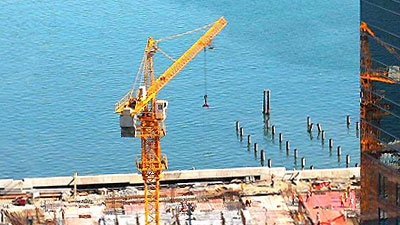- Papua New Guinea’s economy has slowed markedly since late 2012 from the very strong growth rates of recent years. After average annual growth of 6.5 percent between 2004 and 2012, the government expects the economy to expand by 5 percent in 2013 and other reports suggest the economy slowed by much more. This slowdown reflects construction of the PNG liquefied natural gas (LNG) facility nearing completion, and weakening export prices, with these factors weighing on broader domestic activity.
- The depreciating Kina is providing some offset. It is cushioning PNG’s economy from weaker export prices and slowing domestic demand by supporting farmers’ and exporters’ incomes and improving PNG’s competitiveness.
- In 2014 and 2015 the start of LNG exports will significantly raise the level of GDP by one-third or even more. But the impact on gross national income, the current account and government revenues will be far more modest, especially in the immediate future.
- The baseline outlook remains for non-resource GDP to record limited growth over the coming years. The government is trying to support domestic activity through stronger public spending, especially on capital works. Despite weaker commodity receipts, it has been able to maintain its revenues through stronger compliance efforts.
- PNG’s budget deficit is projected to widen in 2013 and 2014. Financing these deficits will raise public debt to at least 35 percent of GDP by the end of 2014, reaching the upper limit set by the medium-term debt strategy. With increasing public debt adding to off-balance sheet and contingent liabilities of as much as 20 percent of GDP, it will be increasingly important for the government to at least meet the deficit targets in its revised medium-term fiscal strategy to contain risks of macroeconomic instability.
- Meanwhile, for most Papua New Guineans, average living standards in 2010 were little changed from 15 years earlier. Approximately 40 percent of the population consumes less than a minimal basket of food and material items, and rates of hardship are higher in rural areas, especially rural Momase. Hardship is higher for households that have had limited access to education or are unable to access employment opportunities. These rates correlate with other indicators of welfare, such as the 40 percent of 5-year olds who are malnourished.
- Growth in the coming years is likely to be more narrowly concentrated in resource production than the broad-based growth of the past decade. This will make improving welfare more challenging. The government can do much to support shared growth without putting its financial health at risk through better quality spending. Spending can be more effective, for example by tackling the barriers and leakages that prevent funds from reaching the final points of delivery of health and education services.
- Relatively simple regulatory reforms would cut costs and create new opportunities for Papua New Guinean businesses to emerge and grow in many areas. Importantly, for both domestic and international investors and employers, consistent, transparent and predictable actions regarding property rights and contractual obligations are essential to nurture sustained growth.

